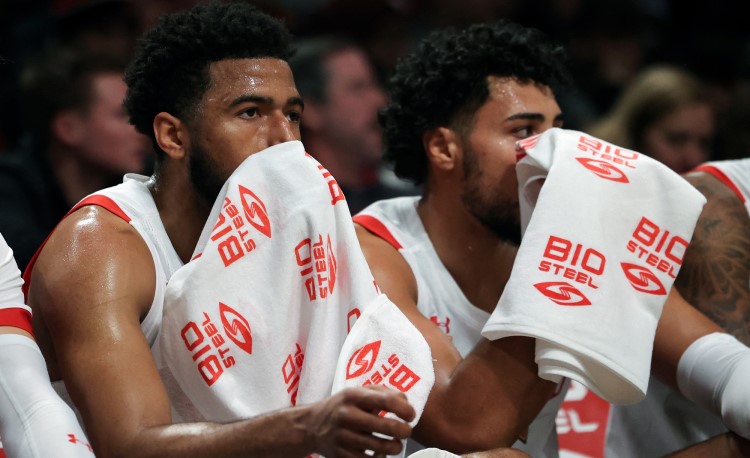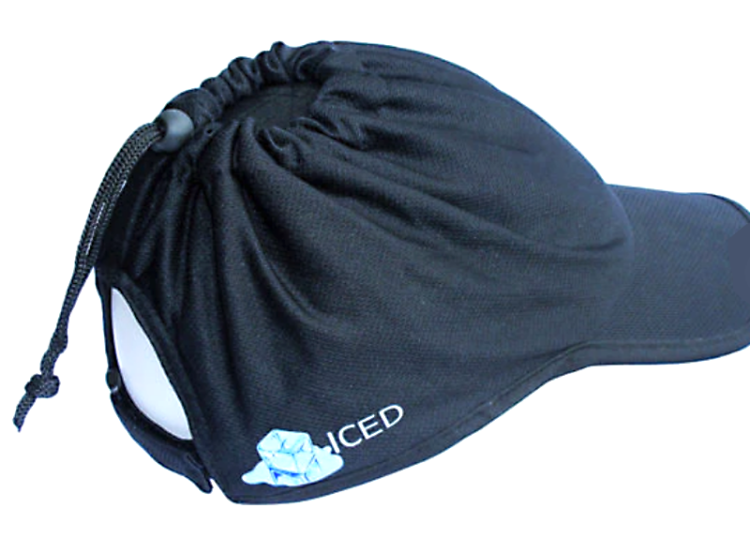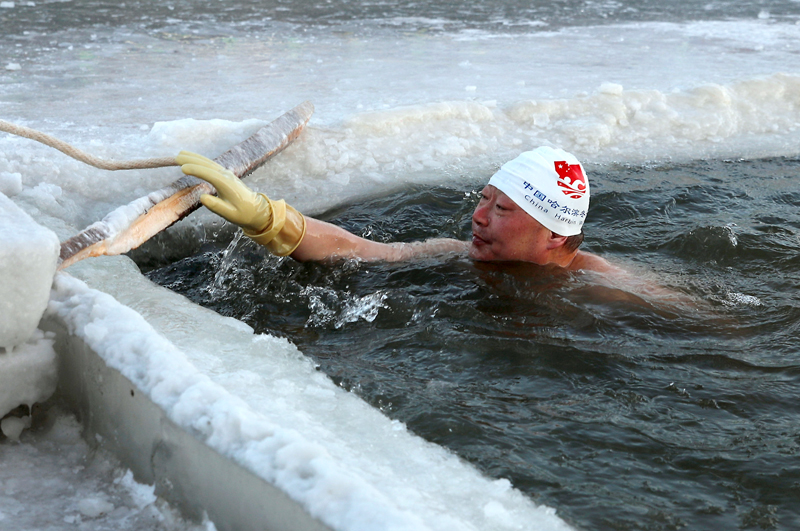You are viewing 1 of your 1 free articles. For unlimited access take a risk-free trial
Cool it: use your head!
With the Northern hemisphere summer in full swing, SPB looks at new research on how athletes can keep cool and enhance performance during hot weather events.
Here in the northern hemisphere, summer has arrived, which means that athletes will be training and competing in much warmer or even hotter conditions than the rest of the year. But while summer sunshine and warmth can be very uplifting mentally, it comes with a potential own penalty – environmental heat stress.
The stress of heat stress
Performing strenuous exercise in warm or hot conditions puts extra physiological strain on the body. That’s because during exercise, only a portion of the energy liberated in muscles is converted to mechanical energy for movement. The rest is produced as heat – heat that needs to be lost to the environment. Unfortunately, the same heat production that is welcome - because it keeps you toasty warm on a winter’s day - becomes more of a problem when the mercury rises.
In an effort to keep core temperatures within the body fairly constant during exercise, the human body needs to discard the excess heat energy. While relatively easy in the winter when the surrounding air is cool, this can be much more challenging in the summer when the air is warm. The response is to send more blood (carrying this heat) to surface of the body in order to help dump the unwanted heat energy. Sweating also takes place where the evaporation of water from the skin’s surface greatly accelerates heat loss (thanks to the high ‘latent heat of evaporation’ of water).
While effective for maintaining core temperatures in a safe range, these physiological responses to hot weather exercise come at a cost; firstly, increasing blood flow to the surface of the body is harder for the cardiovascular system when the muscles are simultaneously demanding a copious blood supply to deliver oxygen to the working muscles. Secondly, when sweating is profuse or prolonged, hydration levels in the body may be adversely affected. As we have discussed at length in previous articles, when dehydration levels of more than 2% of bodyweight occur, performance can be adversely affected, especially in longer events(1-4).
Reducing heat stress to boost performance
Leaving aside the issue of fluid and dehydration, it’s important to understand that simply performing in the heat is enough to blunt performance. In other words, simply completing an exercise task in very hot conditions can impact performance, even when fully hydrated. Research on cyclists performing time trials at temperatures of 17°C (63F), 22°C (72F), 27°C (81F), and 32°C (90F) found that performance declined with increasing ambient temperature(5). A similar pattern has also been noted in runners performing treadmill time trials(6).
“A 2017 study concluded that the brain and the central nervous system actually play an important role in determining the performance benefits of cooling.”
Given these facts, it’s hardly surprising that practical strategies which can alleviate increases in body temperature, and maintain or improve athletic performance are of great interest to athletes, coaches and sports scientists. Invariably, these strategies focus mainly on cooling different regions of the body, either before or during exercise, and research does indeed support the use of such strategies to help augment endurance exercise performance in the heat (or at least prevent its decline)(7). Some of the cooling strategies used to help to support hot-weather endurance performance include:
- Torso cooling using an ice vest(8).
- The intermittent ingestion of cold fluid and ice slurries(9,10).
- The use of menthol mouth rinses (see this article)(11).
- Palm cooling(12).
- Neck cooling (using a cooling collar)(13,14).
Role of the brain in cooling
Given the findings above, you might assume that the most effective mode of cooling to combat heat stress is the one that results in the greatest loss of heat. However, a 2017 study on this topic looked at a range of cooling strategies and concluded that the brain and the central nervous system actually play an important role in determining the performance benefits of cooling(15). In particular, it seems that performance enhancements arise through a combination of central nervous system effects (for example, reduced activity of neurotransmitters and changes in muscle activation), cardiovascular effects such as a decreased heart rate and psychological effects such as improved thermal comfort and a reduction in the perceived effort levels.
What’s also intriguing is that when cooling takes place during exercise resulting in performance gains, it’s quite unusual to observe a drop in core temperature as might be expected. In other words, there must be something else going on other than just heat loss. Because of these factors, researchers have wondered whether cooling strategies for the head might be especially effective because they are more able to impact the brain and central nervous system. Also in its favor, head cooling has another advantage in that the head region is one of high alliesthesial thermosensitivity(16). In plain English, when you are overheated, head cooling is especially effective in producing pleasant feelings of thermal comfort!
There’s good evidence for head cooling for reducing effort perception and improving performance; continuous facial fanning combined with intermittent water spraying has been shown to increase cycling time to exhaustion(17), while spraying the face at regular intervals during a 5km run has been shown to enhance running performance(18). Moreover, another 2017 study found that intermittently cooling the head improved the peak power output during a maximal graded exercise test on a cycle ergometer(19).
Can head cooling improve performance in the real world?
Although the research on head cooling for performance is persuasive, many of the cooling strategies are impractical for use in a competitive environment. For example, it would be difficult to run or cycle carrying a water spray bottle and waving a fan around in front of your face! In addition, some strategies involving repeated application of water or other solutions to the skin of the face or neck can result in skin irritation. However, a fascinating new study by a team of British scientists has looked at the effect of continuous head cooling on 5km running performance (the first ever study to investigate continuous head cooling)(20).
Published in the International Journal of Exercise Science, this study looked at the use of a commercially available ice-filled ‘cooling cap’ worn on the head during treadmill running in a hot environment with an ambient temperature of 32C (90F). For the study, ten well trained triathletes from local triathlon clubs were recruited. Following an initial familiarization session, the triathletes undertook two separate trials in a random order on two separate days. Both trials involved the participants completing a 10-minute submaximal run followed by a 5km time-trial run in the heat (32C /90F). However the two trials differed as follows:
- An experimental trial, in which the participants wore a cooling cap for both the 10-minute submaximal run and the 5km time-trial. The cooling cap used in this trial was a commercially available product made by ‘ICED Cap’ of Norcross, USA (see figure 1). This consisted of a polyester fabric cap with a closable compartment, where around 300 grams of ice can be added to provide cooling to the top of the head.
- A control trial in which participants wore no cap.
Related Files
In order to try not to introduce any placebo effect into the trial, the triathletes were told that the experiment was designed to investigate whether wearing a cooling cap helped (due to cooling) or hindered (due to weight) running performance. This ensured they had no expectations of a better performance in either of the two trials.
During the two trials, the triathletes’ core temperatures and heart rates were measured every minute of the submaximal run and every kilometre of the 5km time-trial run. Ratings of perceived exertion (RPE) were also measured, whilst whole body thermal comfort was recorded using a modified 10-point categorical scale where 1 = ‘extremely cold’, 5 = ‘comfortable’, and 10 = ‘extremely hot’. In addition, sweat losses were measured by the change in body mass pre to post exercise and the skin temperatures on the participants’ foreheads were also monitored. For both trials, participants were provided with water and told to drink freely, and received no physiological or verbal feedback during the time-trials.
What they found
The key findings were as follows:
- When the cooling cap was worn, the triathletes experienced reduced forehead temperatures (figure 2) and improved thermal comfort (see figure 3).
- Most importantly, the 5km time trial times were faster when the cooling cap was worn, averaging 1,175 seconds with the cap compared to 1,189 seconds with no cooling cap (a performance gain of 1.2% - (see figure 4).
- No other variables such as core temperature differed between the cooling cap and control trials.
Figure 2: Forehead temperatures with and without cooling

Scale 0-10 = 10-minute sub-maximal run at 70% VO2max. Scale 1-5 = distance covered in subsequent 5km run. The forehead temperature was significantly lower at all points when the cooling cap was worn.
Figure 3: Thermal comfort with and without cooling cap use

Higher numbers = more heat discomfort. Although heat discomfort rose in both trials, it was reduced at all points in the 5km time trial when the cooling cap was worn.
Figure 4: 5km times with and without cooling

Columns show averaged times for the group as a whole. Dashed lines show the individual responses. Eight participants had faster times with the cooling cap and averaged out, the overall responses were significantly faster when wearing the cap.
The authors noted that this was ‘the first study to observe that continuously cooling the head region with an ice-filled cap enhanced time-trial running performance by 1.2% in trained athletes’. They also noted that while a performance improvement of 1.2% with the cap may seem small, a 14-second reduction in 5km time at the typical running speeds was the equivalent of finishing a race 58 metres ahead compared to no cap, and that this type of performance gain is equivalent in magnitude to other strategies routinely adopted by endurance runners to improve performance, such as altitude training(21), strength training(22), and the use of high intensity warm-up regimens(23).
Practical applications for runners and other athletes
Although the sample size used in this study was small, the results in favor of the cooling cap were statistically very significant. Bear in mind too that these gains were achieved with a weight penalty of around 300 grams placed on the head! How was it that performance and thermal comfort improved, even though there were no differences in core temperature?
One possible explanation is that the performance-boosting effect of cooling the head region results from direct cooling of the cerebral blood and a subsequent reduction in brain temperature. That’s relevant because research suggests that brain temperature is a major determinant of exercise capacity(24), and therefore cooling the brain directly provides a real advantage. The lower forehead temperatures indicate that cerebral blood cooling was almost certainly taking place.
In terms of advice for athletes, these findings provide good evidence for the use of head cooling during exercise in hot conditions. The easiest way to achieve this is with the use of some kind of ice containing headwear such as the Iced Cap used in this study. Although Iced Cap is readily available in the US, readers in Europe and Australia/NZ and other parts of the world may have to look to other brands. Here in the UK for example, ice caps by Compressport are affordable and easily purchased online.
When using these devices, the obvious limitation is time. In hot weather (when they’re most useful), the relatively small amounts of ice used in these caps will melt within half an hour or so. This means that their use is more relevant to shorter races, or to the later stages of a longer race – if you have a special someone to prepare the cap and pass it to you at the appropriate time! They can of course be topped up with fresh ice but this takes time and could self defeating.
To ensure that the cap can be loaded with really cold ice, the best strategy is to prepare the ice in the main freezer compartment (at -18C or lower) and then transfer it to a cold storage box just before you leave home. A good tip is to put much more than 300 grams of ice in the box; the greater the volume of ice, the lower the rate of warming because of the reduced surface area to volume ratio. It also gives you the option to top up your cooling cap if you are taking part in a longer event. Needless to say, when ice is placed in the cooling cap, it should be as near as possible to the start of your race!
References
1. Med Sci Sports Exerc. 2006 Oct;38(10):1762-9 / 2. Med Sci Sports Exerc. 2006 Sep;38(9):1650-8 / 3. Med Sci Sports Exerc. 2007 Feb;39(2):323-9 / 4. Int J Sports Med. 2006 Oct;27(10):765-70 / 5. Int J Sports Physiol Perform. 2011 Jun;6(2):208-20 / 6. Int J Sports Med. 2008;29(10):812–816 / 7. Br J Sports Med. 2015;49(1):7–13 / 8. Int J Sports Med. 2014;35(10):840–846 / 9. Exp Physiol. 2006;91(5):925–933 / 10. J Sports Sci. 2013;31(12):1271–1279 / 11. Scand J Med Sci Sports. 2016;26(10):1209–1216 / 12. Can J Appl Physiol 2005;30(1):87–104 / 13. Eur J Sport Sci. 2011;11(6):419–429 / 14. Eur J Sport Sci. 2011;11(6):419–429 / 15. Sports Med. 2017;47(5):829–841 / 16. J Physiol. 2005;565(1):335–345 / 17. Physiol Res. 2008;57(6):863–872 / 18. J Sports Sci. 2017;35(8):798–805 / 19. J Sports Sci Med. 2017 Mar 1;16(1):77-83 / 20. Int J Exerc Sci. 2023; 16(6): 193–204 / 21. J Appl Physiol. 2001;91(3):1113–1120 / 22. Sports Med 2018;48(5):1117–1149 / 23. Int J Sports Physiol Perform. 2013;8:77–83 / 24. Exp Physiol. 2012;97(3):333–339
Newsletter Sign Up
Testimonials
Dr. Alexandra Fandetti-Robin, Back & Body Chiropractic
Elspeth Cowell MSCh DpodM SRCh HCPC reg
William Hunter, Nuffield Health
Newsletter Sign Up
Coaches Testimonials
Dr. Alexandra Fandetti-Robin, Back & Body Chiropractic
Elspeth Cowell MSCh DpodM SRCh HCPC reg
William Hunter, Nuffield Health
Keep up with latest sports science research and apply it to maximize performance
Today you have the chance to join a group of athletes, and sports coaches/trainers who all have something special in common...
They use the latest research to improve performance for themselves and their clients - both athletes and sports teams - with help from global specialists in the fields of sports science, sports medicine and sports psychology.
They do this by reading Sports Performance Bulletin, an easy-to-digest but serious-minded journal dedicated to high performance sports. SPB offers a wealth of information and insight into the latest research, in an easily-accessible and understood format, along with a wealth of practical recommendations.
*includes 3 coaching manuals
Get Inspired
All the latest techniques and approaches
Sports Performance Bulletin helps dedicated endurance athletes improve their performance. Sense-checking the latest sports science research, and sourcing evidence and case studies to support findings, Sports Performance Bulletin turns proven insights into easily digestible practical advice. Supporting athletes, coaches and professionals who wish to ensure their guidance and programmes are kept right up to date and based on credible science.











